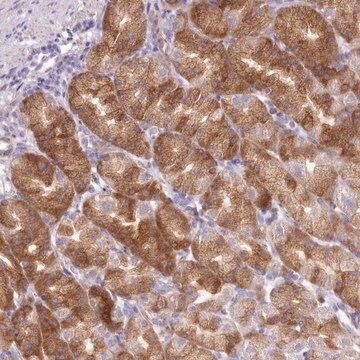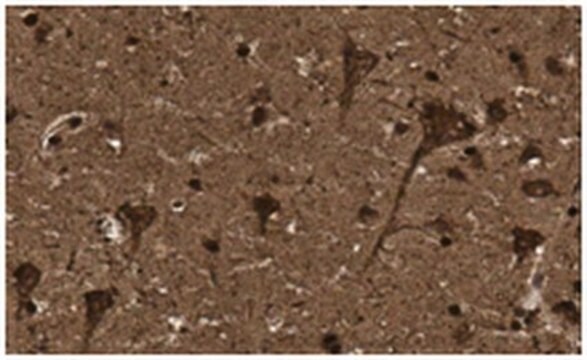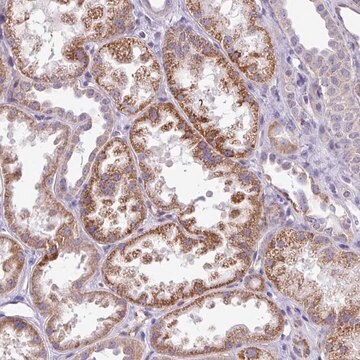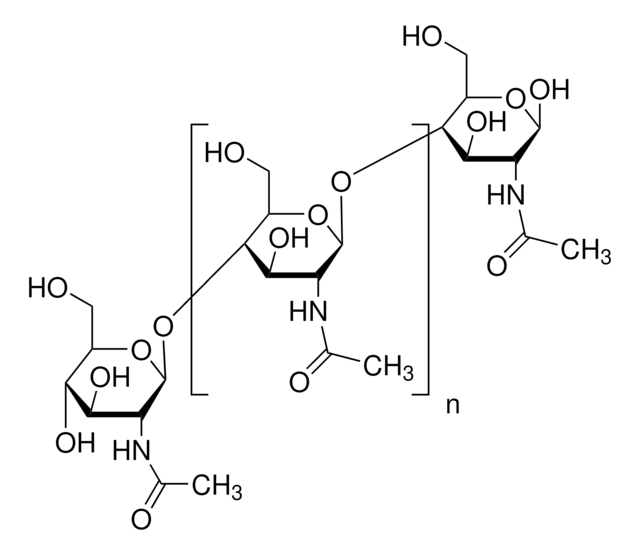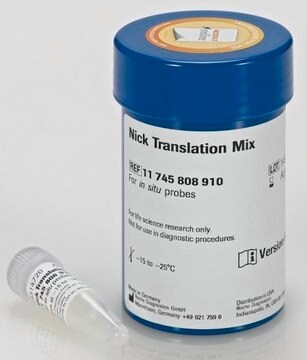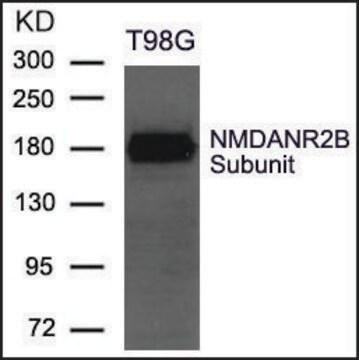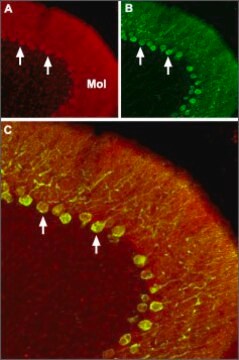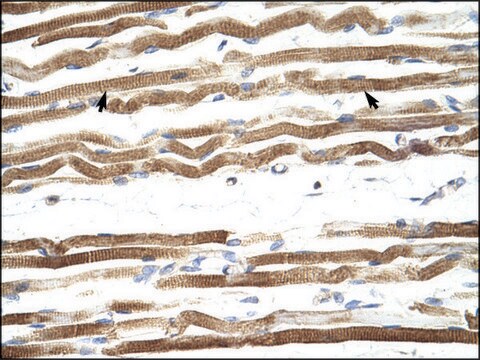MAB2226
Anti-Piccolo Antibody, clone 4G3.3
clone 4G3.3, from mouse
Sinonimo/i:
presynaptic cytomatrix protein, Aczonin
About This Item
WB
western blot: suitable
Prodotti consigliati
Origine biologica
mouse
Livello qualitativo
Forma dell’anticorpo
purified antibody
Tipo di anticorpo
primary antibodies
Clone
4G3.3, monoclonal
Reattività contro le specie
mouse
Reattività contro le specie (prevista in base all’omologia)
human (based on 82% homology), rat (92% homology)
tecniche
immunohistochemistry: suitable (paraffin)
western blot: suitable
Isotipo
IgMκ
N° accesso NCBI
N° accesso UniProt
Condizioni di spedizione
wet ice
modifica post-traduzionali bersaglio
unmodified
Informazioni sul gene
human ... PCLO(27445)
mouse ... Pclo(26875)
Descrizione generale
Specificità
Immunogeno
Applicazioni
Representative images from a previous lot.
Piccolo staining pattern/morphology on mouse brain tissue/cerebellum. Tissue was pretreated with citrate pH 6.0, antigen retrieval. A previous lot of the antibody was diluted to 1:300, using IHC-Select Detection with HRP-DAB. Immunoreactivity is localized to the synaptic junction of neurons in the granular layer and Purkinje cells(arrow).
Neuroscience
Synapse & Synaptic Biology
Qualità
Descrizione del bersaglio
Stato fisico
Stoccaggio e stabilità
Risultati analitici
Rat brain lysate, mouse cerebellum
Altre note
Esclusione di responsabilità
Non trovi il prodotto giusto?
Prova il nostro Motore di ricerca dei prodotti.
Codice della classe di stoccaggio
12 - Non Combustible Liquids
Classe di pericolosità dell'acqua (WGK)
WGK 2
Punto d’infiammabilità (°F)
Not applicable
Punto d’infiammabilità (°C)
Not applicable
Certificati d'analisi (COA)
Cerca il Certificati d'analisi (COA) digitando il numero di lotto/batch corrispondente. I numeri di lotto o di batch sono stampati sull'etichetta dei prodotti dopo la parola ‘Lotto’ o ‘Batch’.
Possiedi già questo prodotto?
I documenti relativi ai prodotti acquistati recentemente sono disponibili nell’Archivio dei documenti.
Il team dei nostri ricercatori vanta grande esperienza in tutte le aree della ricerca quali Life Science, scienza dei materiali, sintesi chimica, cromatografia, discipline analitiche, ecc..
Contatta l'Assistenza Tecnica.